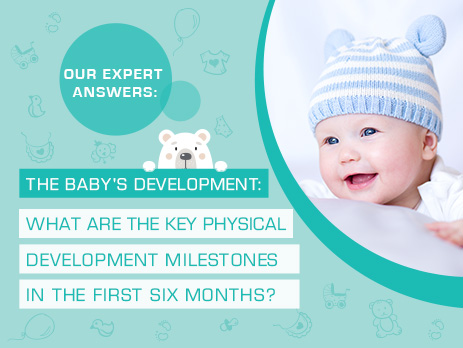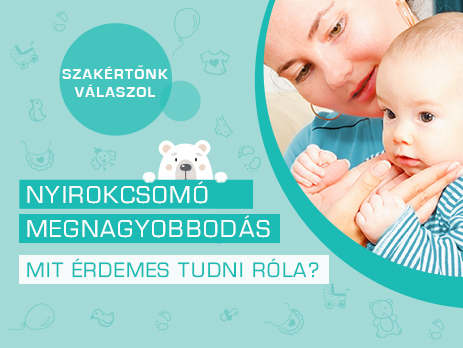What are the key physical developmental milestones in a baby’s first 6 months?
IN THIS ARTICLE:
The basics of speech development
Sensory development processes
Motor development steps from the newborn stage
The first six months of a baby’s life are an exciting time, marked by rapid physical development. In this blog post, Dr. Tibor Kovács, a pediatric specialist with decades of experience in supporting infant development, explains what parents should focus on during this thrilling yet challenging period. He provides a comprehensive guide for parents on how to support their child’s healthy growth and highlights the key physical developmental milestones that require special attention.
Communication begins in the womb and continues after birth as the baby’s sensory organs—vision, hearing, touch, taste, and smell—undergo significant development. This helps the baby explore and understand the environment. The development of motor skills is also crucial as the baby learns to lift their head and roll onto their stomach. The developmental process is complex and occurs in stages, starting with eye-tracking, producing sounds, progressing through movements, and eventually leading to walking. Each movement milestone has its own time and place, making it essential to maintain a balanced developmental pace.
Let’s take a closer look at these developmental stages.
Foundations of Speech Development
Your baby’s auditory system develops around the 16th to 20th week of pregnancy, allowing them to hear sounds both from within the womb and external noises filtering through the amniotic fluid. After birth, during the first six months, communication skills rapidly progress. Initially, crying is the primary means of expression, but soon, the first “speech-like” sounds begin to emerge. Verbal interaction provided by parents—such as eye contact, smiling, and making facial expressions—is essential in promoting speech development.
During the first six months, a baby’s sensory development focuses on vision, hearing, touch, taste, and smell:
- Vision: At birth, a baby’s vision is limited, allowing them to see clearly only within 20-30 cm, just enough to recognize their parent’s face. Initially, they are particularly attracted to high-contrast patterns. Over the first few months, their visual field expands, and their ability to perceive colors and motion improves. By around 4-5 months, they can follow moving objects with their eyes and better judge distances between objects.
- Hearing: A newborn’s hearing is already relatively developed at birth. They can recognize familiar sounds, which can have a soothing effect. In the first weeks and months, their auditory perception sharpens, allowing them to locate the source of sounds more accurately. Babies enjoy melodic sounds and music, which supports early language development.
- Touch: Touch is one of the primary ways infants explore their surroundings. Skin contact, such as cuddling and gentle strokes, provides both physical and emotional security. Experiencing different textures, temperatures, and pressures helps them understand and process their environment.
- Taste and smell: Even at an early age, babies can distinguish basic tastes. From birth, they show a preference for sweet flavors, which encourages them to accept and enjoy breast milk or formula. Smell is one of the first senses to aid in recognizing their mother after birth and plays a crucial role in forming emotional bonds.
The stages of motor development from newborn age
Motor development begins with head movements, looking around, and slight head turning. Soon, babies start using their hands, rolling to their side, and eventually turning onto their stomach. To support their motor skills, it is essential to provide plenty of tummy time, which helps strengthen their neck and upper body.
Following the incredible journey of a baby’s first six months, we can see how complex and fascinating this developmental process is. Each milestone achieved brings them closer to discovering the world and their unique abilities. Providing the right support and attention ensures that they have an environment conducive to their growth and development.
Remember, every baby develops at their own pace, so patience and understanding are key. However, if you notice any unusual patterns or delays and feel uncertain, it is always best to consult a specialist. The first six months of a baby’s development are just the beginning of their journey, laying the foundation for future learning and growth.





